Do you know that deer can jump up to 10 feet high? Interesting right? Like this deers have many interesting secrets up their hooves.
Well, what comes in a deer overview? You get to know about deer insights, starting from its types, morphology and behavior, physical features, habitat, etc., all in an article. The diversity in their features will amaze you.
However, I have given you a glimpse of what this article will comprise. To learn more about deer overview: characteristics, species, and more, dive with us into the details.
01. Panda Overview
02. Pumas Overview
What Are A Few Unique Features And Characteristics Of Deer?
We all know that deer can jump really high, but do you know that deer enjoy 310-degree vision? Surprisingly, yes! To learn more about deer, the deer overview article will introduce you to some mind-blowing features.
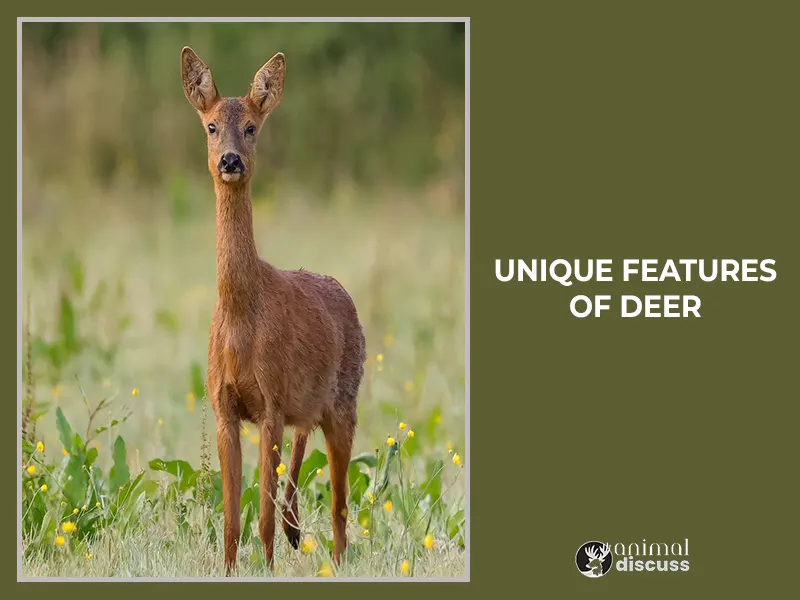
Vision
Beginning with their vision ability, as their eyes are located on the sides of the head. It allows them to have a greater range of vision. Moreover, they’ve got more rods in their eyes, which allows them to see much better in darkness.
Other than this, they can sleep while keeping their eyes open! They mainly dozed for a duration of 30 seconds to a few minutes. This feature helps them stay safe while sleeping.
Size
Well, for now, you know that deer have many types and along with the types their sizes differ too. Starting from being 12 inches tall to 78 inches tall, different sizes of deer exist.
Odorless baby
Another interesting characteristic of deer is its baby carries no scent. The baby ones have natural protection from predators because of their lack of odor features.
Nose
Other than their eyes or antlers, have you ever noticed their tiny nose? Their nose has a bumpy texture that has approximately 297 million olfactory receptors. For which they have better smell detection ability than dogs.
Antlers or Horns
Lastly, one interesting characteristic is that only male deer species have antlers but one exceptional female species has antlers which is “Reindeer”. Through this antler, they attract mates and fight to show their dominance.
These are a few characteristic and unique features of deer in a precise manner.
How Many Types Of Deer Are There?
In the world, there are 43 types of deer that belong to the family Cervidae – quite a big number, right? Well, they have two subfamilies, which are Old World Deer (subfamily Cervinae) and New World Deer (subfamily Capreolinae).
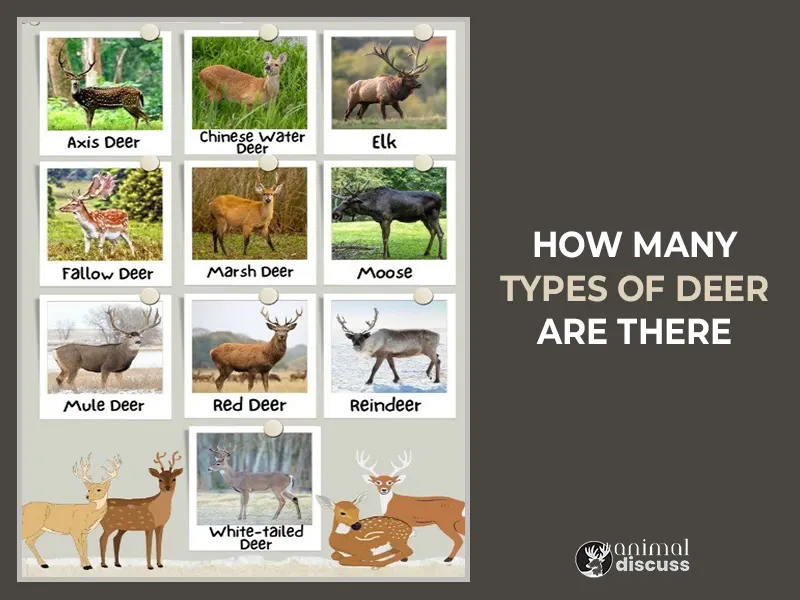
Moving on, diverse types of deer live in different locations around the world. Such as, in North America, white-tailed mule, elk, and caribou deer, whereas in Europe, red, fallow, and roe deer live.
Other than this, in Asia, there are sambar, chital, etc. You can see that based on their habitat, behaviors, and antlers, they remain divided across the world.
What Does A Deer Eat?
Mainly, deer are herbivores. Their diet depends on the basis of their species, habitat, season, etc.
For example, different species have different preferences in the case of eating. Such white-tailed deer can eat different varieties of plants, whereas the moose eats flowers, shrubs, etc.
Another aspect of deer eating habits depends on the habitat. For example, if they live in forested areas, they eat leaves, berries, etc. Whereas, those who live in grasslands consume more grass.
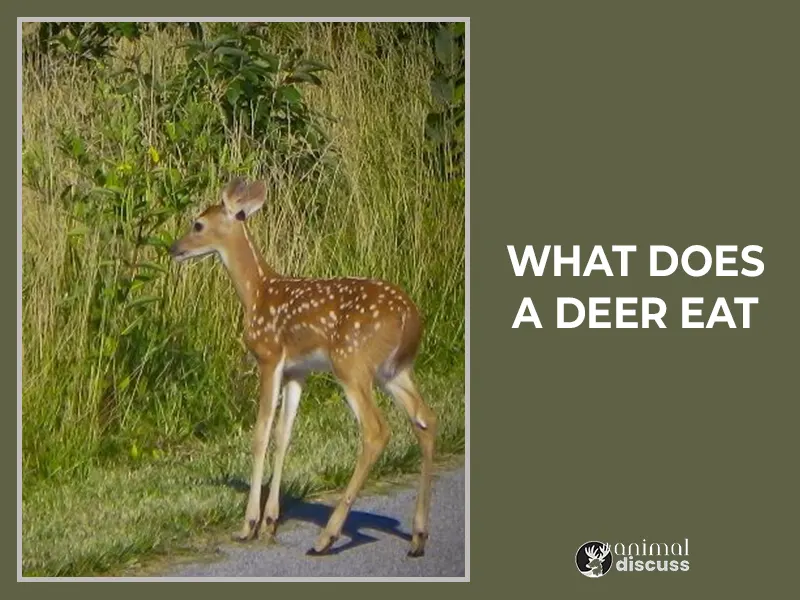
Well, not all the year there is availability of the same foods in different seasons. In the summer and spring seasons, they can eat more green and fresh leaves and plants. But in winter, there are fewer leaves so they eat bark, etc.
Likewise, there are so many other factors that influence their eating routine. So what they eat fluctuates from time to time.
Interested to learn more about their eating habits? Follow up my other article featuring ‘Deer foods and diet’.
What Are The Behavioral Habits Of Deer?
The behavioral habits of different species of deer vary greatly; however, I’ll discuss a few here:
Seasonal adaptation
The first thing that comes into play in deer behavioral habits is the way deer seasonally adapts. Well, during the summer, it’s easier for them but in the winter, they use their fat storage for energy.
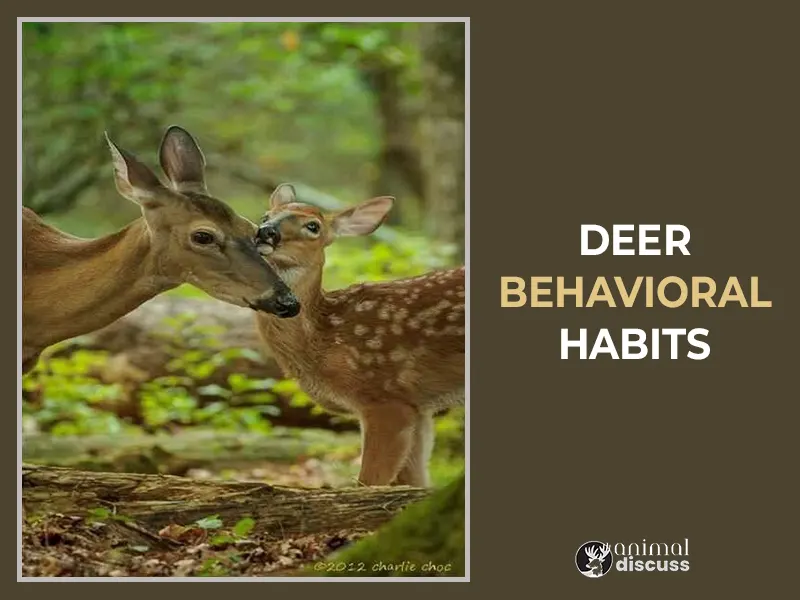
Moreover, some deer live in groups and some like to spend time alone. But the ones who live in herds, like the white-tailed deer, remain safe from predators.
Communication
Another interesting behavioral aspect of these mute animals is how they communicate. Well, starting with using various sounds, body language, and even odors, are their ways to communicate.
Safety from predators
One of the most important behavioral habits is how they keep themselves protected from predators. Their speed, agility, and ability to blend with their surroundings help them hide.
Also, deer fur generally blends in with its environment, allowing it to remain hidden from predators. To fit in better, certain species may even change the color of their fur with the seasons.
Other than this short glimpse of deer behavior, you can definitely check out our detailed writing on ‘Behavioral Facts of Deer’.
What Physical Features Make Them So Active As An Animal?
In the upper section, I’ve already talked about their extraordinary 310-degree vision eyes. Now it’s time to learn about their hearing, smelling ability, and antlers.
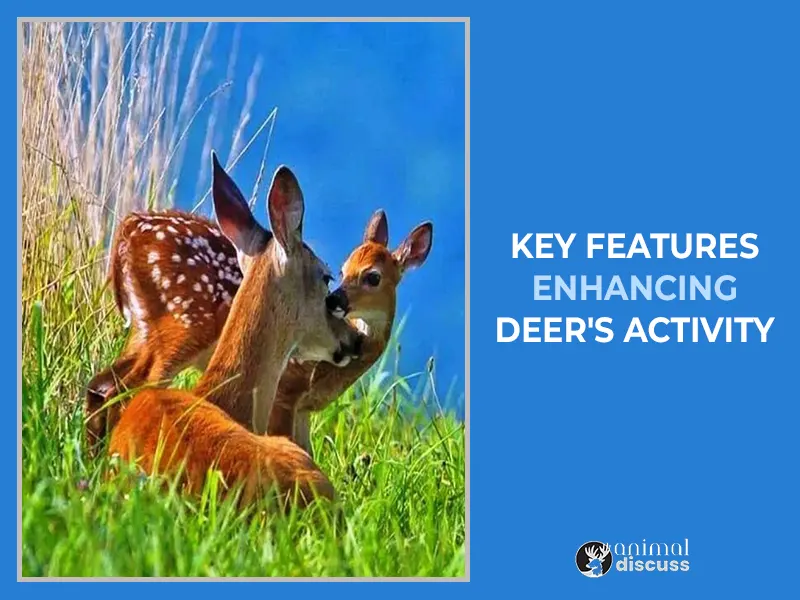
Eyesight
Well, one thing that needs to be mentioned before going into the other section of physical features is that they have 20/100 vision. That means they can only see 20 feet away in comparison to a human.
Sniffing
However, a deer has the ability to sniff hundreds of different smells at a time. So be it any predator or food, deer can sniff it further and do whatever it needs to do at that moment.
Hearing
Besides their eyes and smelling features, their hearing ability is quite remarkable too. Within a low-frequency range of around 20 Hz to 20 kHz, they can hear. Moreover, they can detect quite well from which side the sound is coming.
As their ears are placed slightly angled on their heads. It makes them hear a variety of vocalizations, like snorts, grunts, etc., to communicate well.
Well, can you connect their physical features with their ability to remain safe from predators? All of it is interlinked for them to remain safe.
What Are The Factors Affecting Deer Movement Patterns?
It is quite evident that animals move from place to place. But what are the underlying factors that compel the deer to move?
Beginning with the first aspect, which is the source of food and water. In the wilderness, they look for food that will fulfill their physiological requirements.
However, after noticing that they’ve got enough food, what they do is look for assurance of safety. They ensure that they can safely rest and sleep here.
Other than their food and safety purposes, another factor in which deer movement patterns are noticed is during the breeding season. During October, male deer leave bedding covers and start moving.
What Place Is Ideal For A Deer Habitat?
Deer are adaptable animals and can survive in different kinds of environments because of it. The ideal place for a deer habitat is mostly forest or woodland.
The reason behind choosing these places is to ensure their safety, as they can flee from predators in these places. And this place has comfort for them, where they can rest.
Also, the chances of getting an adequate amount of food are possible here. And these places are safe to raise their babies. Combined with all these aspects, they chose to remain here.
If you want to know further about deer habitat, you can check out the detailed article on “What Defines the Habitat of Deer?”
How Do Deer Keep Themselves Safe?
Despite their beauty, deer are extremely adept at survival in the wild. They are constantly threatened by predators, so they have created a variety of defense strategies:
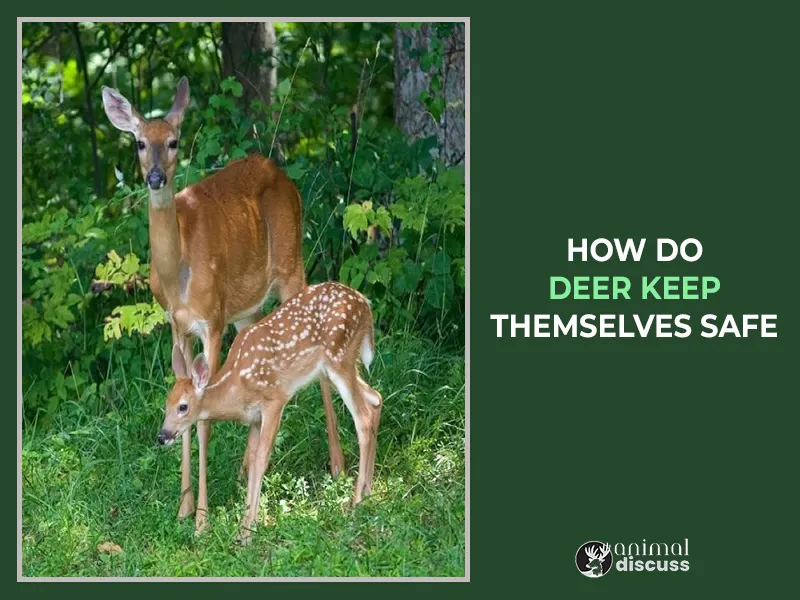
- Camouflage: Being able to use their fur for natural camouflage when there are predators around.
- Speed: Their speed and agility make it difficult for predators to catch them.
- Sensory perception: Excellent hearing, smelling, and vision features.
- Living in Herds: They mostly live in herds. The higher the number, the safer it is.
- Using Long Legs: Deer can kick well with their long legs.
- Choosing the right habitat: Lastly, they choose their habitat very mindfully to remain safe.
Frequently Asked Questions
Here are a few more additional questions you might be asking now regarding Deer and its characteristics.
01. What abilities does a deer possess?
A deer is capable of flying past an eight-foot fence because of its exceptional jumping abilities. Bleats, whistles, moaning, loud snorts, and squawks are just a few of the many sounds that deer are capable of producing.
02. When you move, can deer tell?
Yes. A deer’s eyes are mostly on things that are moving. Because deer can see so well around them.
03. How intelligent are deer?
Deer are apparently smarter than most people believe. When it becomes chilly, they quickly figure out where to get easy-to-find food.
Conclusion
Deer are animals who live in a herd and remain active to survive. In the article Deer Overview: Characteristics, Species, and More, I’ve tried to highlight a few unique features of it. But if you want to learn more, check out our detailed section too.
However, a detailed overview is provided, which can cover your primary knowledge about a deer.
References:
- https://www.britannica.com/topic/list-of-deer-2058412
- https://www.livescience.com/51154-deer-facts.html
- https://www.havahart.com/deer-facts

